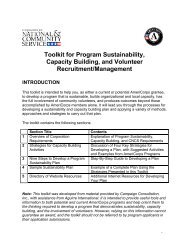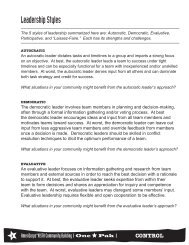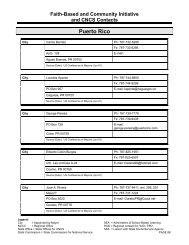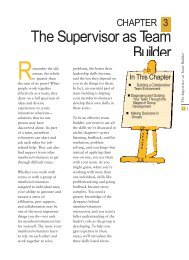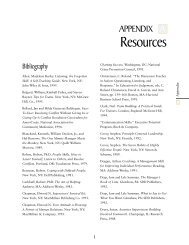MAKE IT LAST FOREVER: THE ... - National Service Resource Center
MAKE IT LAST FOREVER: THE ... - National Service Resource Center
MAKE IT LAST FOREVER: THE ... - National Service Resource Center
Create successful ePaper yourself
Turn your PDF publications into a flip-book with our unique Google optimized e-Paper software.
Department of Education. The policies, programs, and procedures in a school are connected in numerous ways to each of these<br />
entities, making for a confusing accountability dynamic, bureaucratic procedural processes, and intricate funding nuances.<br />
Add to this the fact that service learning has primarily been a federally-initiated and -funded movement and one is able to see<br />
clearly the difficulty that local schools and districts have in infusing service-learning into a well-established system of teaching and<br />
learning.<br />
Nevertheless, numerous approaches to institutionalizing service-learning are being attempted, all of which are being used to<br />
legitimize its practice, communicate its effectiveness, and positively impact student performance. As schools and districts are<br />
successful in doing so, service-learning indeed becomes institutionalized. When its practice becomes so widespread that faculty<br />
turnover will not cause the practice to cease, the practice is likely to be institutionalized. The table below shows some common ways<br />
of describing institutionalized practices as compared with those which are not yet embraced systematically.<br />
AN INST<strong>IT</strong>UTIONALIZED A MARGINALIZED<br />
PRACTICE IS: PRACTICE IS:<br />
Routine Occasional<br />
Widespread Isolated<br />
Legitimized Unaccepted<br />
Expected Uncertain<br />
Supported Weak<br />
Permanent Temporary<br />
Resilient At-Risk<br />
There have been prior efforts to identify some of the factors in institutionalization, some of which pertain to service-learning.<br />
Much of the conceptual framework stems from organizational change theory, which has to do with how change occurs within systems.<br />
Miles (1983) presented one of the earliest articulations of indicators of institutionalization in service-learning. Some of the<br />
important issues include:<br />
• Stability of program and staff leadership • Administrative pressure<br />
• Influence of innovation advocate • User practice mastery<br />
• Teacher-administrator harmony • Student impact<br />
• Percentage of use • User commitment<br />
• Stabilization of use • Availability of assistance<br />
• Environmental consistency<br />
Anderson (1993) identified six elements of change in her examination of how new educational ideas are explored and<br />
institutionalized. These include:<br />
17



